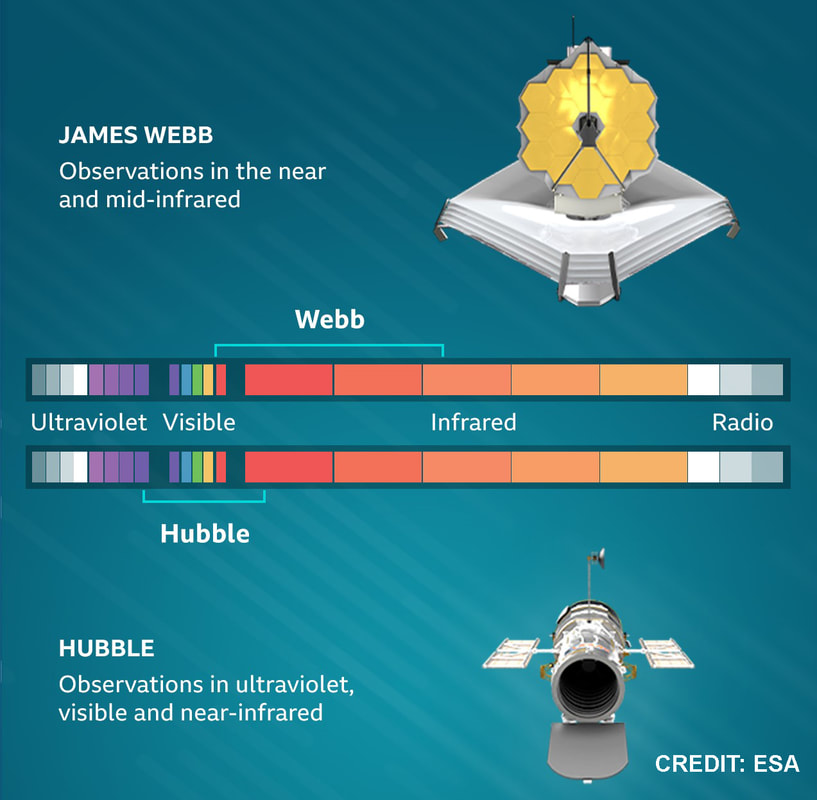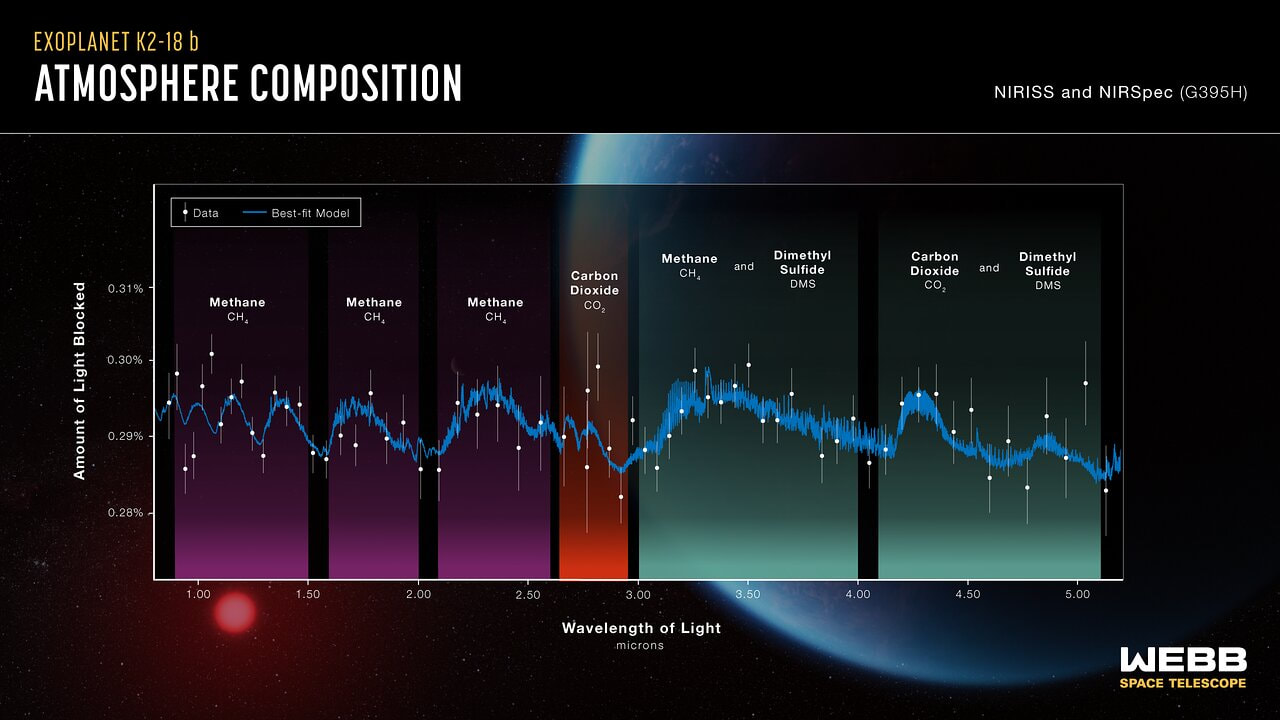|
Graham writes ...  The James Webb Space Telescope has been in the news again with a reported claim that it has detected evidence of life on an exoplanet located at a distance of about 120 light years from Earth. The media reports are somewhat exaggerated however, suggesting that the James Webb has triumphed again with a momentous breakthrough. But the truth is much less clear cut, and I thought it helpful to have a more objective look at the story to determine the veracity of the claims. Before considering this instance, it is useful, and hopefully fascinating, to review the methodology that the JWST uses to determine the composition of the atmospheres of planets outside our own solar system. First of all, its worth noting that it is very common for stars, in general, to possess a planetary system, and there is a large and growing catalogue of so-called exoplanets. If we think about our own planet, the depth of the atmosphere is relatively very small, being about 1.5% of the radius of the planet – and only about one tenth of this estimate corresponds to the that part of the atmosphere which is dense enough to support life. So the target of study – the atmosphere of an exoplanet – is generally very small, especially when examined remotely at such large distances. As we have mentioned in previous posts, the JWST is optimised to operate in the infra-red (IR) part of the electromagnetic spectrum, and we have discussed why this is beneficial. However, it turns out that this characteristic is also useful when investigating exoplanet atmospheres. To do this the JWST uses spectroscopy, which is simply the science of measuring the intensity of light at different wavelengths. The ‘graphical representations’ of these measurements are called spectra, and they are the key to unlocking the composition of exoplanet atmospheres. Typically, a spectrum is an array of rainbow colours, but if you capture the spectrum of, say, a star, it will also have discreet dark features called absorption lines. As the light passes through the star’s atmosphere on its way to Earth, the various elements (hydrogen, helium, etc) absorb the light at specific wavelengths, and a particular set of such lines reveals the presence of a particular element in the star’s atmosphere. Coming back to thinking about the composition of exoplanetary atmospheres, why is IR spectroscopy such a powerful tool? It is at IR wavelengths that molecules in the atmospheres of exoplanets have the most spectral features. In particular, IR spectroscopy is especially effective in detecting molecules that are associated with life, such as water vapour, carbon dioxide, and methane. The detection of these molecules can provide evidence of habitable conditions on exoplanets and even of life itself. So how does the JWST capture a tell-tale spectrum of the atmosphere of a distant exoplanet? The process requires that the planet transits its star at some point in the planet’s orbit. A transit occurs when the planet is between the star and the Earth, and the planet moves slowly across the disk of the star. Prior to the transit, a spectrum is taken of the star, Spectrum (star). When the planet begins its transit then the received light will have passed through the exoplanet’s atmosphere, as well as emanating from the star. A second spectrum is collected, which contains spectral features from the star and the atmosphere, Spectrum (star and planet). To acquire the spectral features of the atmosphere we difference the two, Spectrum (planet’s atmosphere) = Spectrum (star and planet) – Spectrum (star). Hopefully the accompanying diagram helps to appreciate the process. Getting back to the specific claims about finding evidence of life, the exoplanet concerned is designated K2-18b. The star governing this planetary system, K2-18, is to found 124 light years away in the constellation of Leo. The star is a red dwarf, which is smaller and cooler than our Sun, so that K2-18b orbits at a much closer distance than we do around our Sun. The exoplanet orbit has a radius of about 21 million km, and a period (‘year’) of 33 Earth days. This places it in the habitable zone, where it receives about the same amount of energy from its star as we receive from ours. The atmospheric composition of K2-18b was examined during two transits in January and June this year, and the results paint a picture of an ocean world with a hydrogen-dominated atmosphere. However, along with hydrogen, water vapour, carbon dioxide and methane, something else showed up called dimethyl sulphide (DMS) which caused a bit of a stir in the media. This is because the main primary and natural providers of DMS on Earth are marine bacteria and phytoplankton in our oceans. So, inevitably, it was heralded as the first detection of a ‘life signature’ on an exoplanet. The JWST results suggest that DMS makes up about 0.0003% of K2-18b’s atmosphere, but unfortunately in the IR bandwidth used to obtain the results, DMS is degenerate with other atmospheric species – in particular, methane and carbon dioxide. This means that the ‘bump’ in the spectrum produced by DMS is coincident with the spectral features of the other gases, so introducing a difficult ambiguity into the analysis. Looking at the results shows that there is a 1 in 60’ish chance that the detection of DMS is a statistical fluke. So, the conclusion that it is a marker for life is not secure.
Not to be put off by this, the scientists are planning more JWST observations of K2-18b using instruments that look at longer IR wavelengths where DMS absorbs more strongly and unambiguously. However, after due process, my guess is that those results will be another year or so away. I will bring you any further news as it develops … Graham Swinerd Southampton, UK October 2023
0 Comments
|
AuthorsJohn Bryant and Graham Swinerd comment on biology, physics and faith. Archives
July 2024
Categories |






 RSS Feed
RSS Feed
